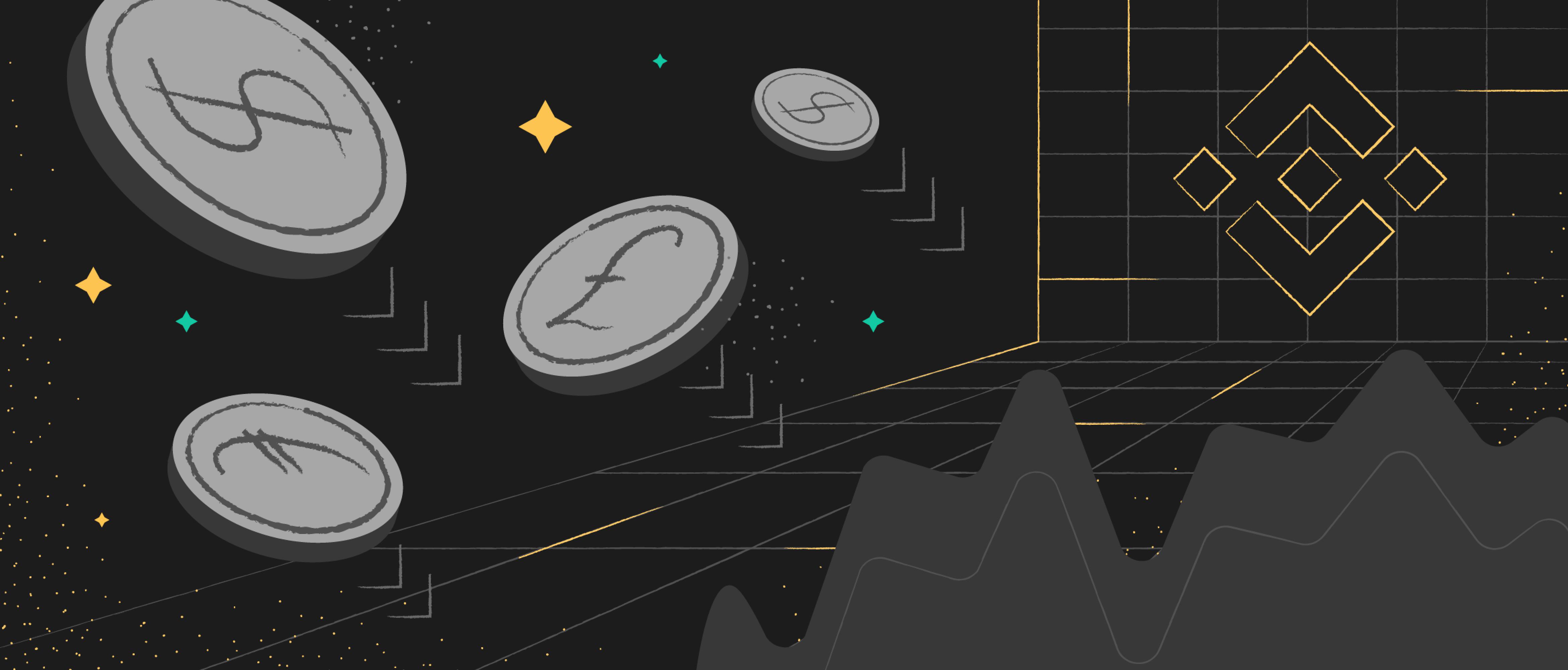
- All
- Tools
- Analytics
- Technical Analysis
- Trading
- Blockchain
- DeFi
- Guides
- Company News
- Educational
- Opinion
- Price Predictions
- Market News
- News
- Trading cases
- Practical guides
- Exchanges
- Trading signals
- Cryptocurrency
- Crypto bots
- Other
Become a crypto master
Learn everything about crypto,
trading and bots

Buy Wall
Analyzing cryptocurrency buy walls in 2025, focusing on the impact of automated trading, institutional involvement, and regulatory developments on market dynamics.
Start Trading on 3Commas Today
Get full access to all 3Commas trading tools with free trial period

Understanding Buy Walls in 2025
Successful trading in 2025 requires a solid theoretical foundation. Without a grasp of key terminology and basic analysis of exchange indicators, you risk rapid losses, especially given the extreme volatility of some assets, where quotes can fluctuate multiple times a day. Among the pivotal terms, 'buy wall' stands out. Let's delve into what a buy wall signifies in the realms of stocks and cryptocurrency exchanges.
In the context of trading, the term 'wall' refers to a substantial order or a cluster of orders for buying or selling assets. The presence of a buy wall on a cryptocurrency exchange effectively sets a ceiling or floor for the price, a tactic astutely leveraged by seasoned traders.
How walls work
The presence of a sell wall prevents orders with higher prices from being executed. For example, a group of traders simultaneously puts 10,000 forks for sale at $5 per unit. Obviously, no one in their right mind would buy the same forks for $6, $7 or $10 when they could be bought for $5.
This allows the traders, who created the wall on cryptocurrency, to keep the rate under control and not let it grow. At the same time, they themselves can remove the wall at any time, if it suits their interests. Other sellers, seeing an array of sell orders at low prices, can simply panic and start draining their assets for mere pennies. It's not uncommon for traders who create a wall to rely on the psychological aspect.
The opposite would be the situation with a buy wall. Such a wall on a cryptocurrency exchange prevents transactions at lower prices. For example, several traders place orders to buy forks at an inflated price. Then, sellers will not pay attention to orders with lower prices, and traders who created those orders will be forced to buy assets at higher prices or not buy them at all. In this case, no one on the exchange will be able to buy and will not want to sell this cryptocurrency cheaper than the value set by the wall, artificially inflating prices.
Fictitious Buy Wall
A fictional wall generally rises abruptly at a given price — it doesn’t rise gradually. An order is made at the lowest current bid price or the highest current ask price in most circumstances. Such walls are fictional or artificial since a trader placed a large order might cancel it any second.
Whales build up enormous orders to manipulate the market. For example, they can create an artificial buy wall keeping the price high. At the same time, they’d sell assets. Once whales realize desired amount of assets, they swiftly cancel an order, causing the price to fall. Many traders would sell off as prices plummeted. And that’s an entrance point for whales. This vicious cycle repeats over and over again, only helping whales to accumulate money.
Buy wall vs Sell wall
Sometimes, one can observe the so-called sell wall — the level of asset prices at which a large number of sell orders are placed. This is the opposite of a buy wall. Let’s examine all types of situations you can face when trading.
Depth of market may have 3 basic conditions: bid domination (sell), equilibrium, and ask( buy) domination. All three market situations are shown in the pictures below.
A clear example of a buy wall
An example of market equilibrium
How to use a wall?
Using a wall, whether it's a buy wall or a sell wall, in 2025 requires a strategic approach and an understanding of market dynamics. Here are steps on how to use a wall effectively:
1. Identify the Wall:
- Start by identifying the presence of a significant buy or sell wall on the order book of the asset you are interested in. Many cryptocurrency exchanges and stock trading platforms provide order book data.
2. Analyze the Wall:
- Determine the size of the wall, i.e., the number of orders and the total quantity of assets it represents.
- Assess the price level at which the wall is placed. Is it near the current market price, or is it significantly above or below it?
- Look for any signs of manipulation or spoofing, where large orders may be placed to deceive traders. Be cautious and verify the authenticity of the wall.
3. Consider Market Sentiment:
- Gauge the overall sentiment in the market. Is it bullish, bearish, or neutral?
- Analyze recent price movements, news, and fundamental factors that might influence the market sentiment.
4. Use as Support or Resistance:
- If you're a trader looking to enter a long position, a significant buy wall can serve as a potential support level. You may consider placing a buy order slightly above the wall, anticipating that it will provide price stability.
- Conversely, if you're considering shorting an asset, a sell wall can act as a resistance level. You might place a sell order slightly below the wall, expecting the price to struggle to break through it.
5. Risk Management:
- Always implement proper risk management strategies. Set stop-loss orders to limit potential losses in case the market moves against your position.
- Consider the size of your position relative to the wall's size. Don't over-leverage or risk more than you can afford to lose.
6. Monitor Market Depth:
- Continuously monitor the order book to see if the wall is being removed or adjusted. Walls can disappear quickly if the entity behind them decides to change their strategy.
7. Combine with Technical and Fundamental Analysis:
- Use wall information as one element of your trading strategy but not as the sole factor. Combine it with technical analysis, such as chart patterns and indicators, and consider fundamental factors that might impact the asset's value.
How to read buy and sell walls
Reading buy and sell walls in 2025, as in previous years, is an essential skill for traders and investors. Buy and sell walls provide insights into market sentiment, potential support and resistance levels, and the overall supply and demand dynamics of an asset. If you don’t want to be led by whales or speculators, you have to know how to read buy and sell walls. Often, walls are only created to benefit from inexperienced and panicking traders. Major players intimidate naive rookies into buying overpriced or selling underpriced assets. That’s why you may want to find a buy wall. That way you can either sell your asset immediately or wait until it falls, so you can buy a cheaper one.
Since many traders believe what they see, they’re easy prey for whales. A bright example would be placing orders when a significant number of buy and sell orders already appear at a particular level. It can be support level, resistance, or anything else — it doesn’t matter. Even exchanges can create artificial walls. However, they rarely do so since most contracts aren’t required to do so.
As a rule of thumb, you have to check whether there is a particular strategy behind keeping the price low, preventing any sales by building a massive buy wall. In many cases, large buy orders are explained by someone’s will to control the market. Building up buy walls isn’t a commonly used trading strategy, as they show efficiency only for high-liquid assets. That’s why they’re used by large holders, which are usually BTC or ETH enthusiasts.
Buy/sell walls are usually a short-term event, meaning they disappear just the way they appeared.
Buy walls and market manipulations
Walls concept is just one of many ways to manipulate the market. Generally, whales have 5 ways to do so.
Buy and sell walls. Buy walls occur when buy orders significantly exceed sell orders volume. The formation of walls by whales does not mean that they want to buy and sell a coin. More often than not, it’s done to influence the market crowd. This method can and always is combined with other speculation tactics shown below.
Drop & rise cycles. Whale starts selling relatively large amounts of cryptocurrency at below-market prices. This leads to panic sentiment and a "plunge" of the coin, and Whale buys back the cheaper cryptocurrency, which then returns to previous price levels.
Retention level. Whales hold the price of a cryptocurrency in a certain price range until they realize their interest. This can be a set trading position or an exit to lock in profits.
Depth of market flip. With a small number of sell orders, the appearance of increasing demand is created. For this purpose, large buy orders are placed in the cup that can be seen by all market participants. The market crowd, expecting the growth of the asset, enters the market before the large orders. As soon as the whale gains the necessary volume of the trading position in the short, the large buy order is canceled and the market falls.
Pump & dump. The technique involves the use of media and social media communities to provoke small players to buy a coin. This allows the whales to sell the cryptocurrency, bought for nothing, at a good price. After the whale's release, the value of the coin drops to pre-pumping levels.
How to read the Binance depth chart
Buy and sell walls relate to a trading depth chart concept, a graphical bid/ask orders representation. Generally, a depth chart increases your chances for successful trading. Let’s look at how you can read a depth chart using Binance — the most prominent centralized crypto exchange — as an example.
To access the depth chart on Binance, click on the Depth button shown in the picture below.
When you click the button, a graphical depiction of the bid/ask ratio will appear.
On the green side, you can see the lowest buy order that buyers are hoping the asset would reach in order for them to acquire it as cheaply as possible. On the red side, the maximum sell order that sellers hope the asset would attain so that they may sell it for a large profit is displayed.
You should respond as soon as you notice a vertical line build up on the order charts. For example, If the sell orders soar, you can expect a steep decline. Remember that a quick reversal process occurs immediately after the fake decrease or increase. Artificial, speculative walls fall off, and the price always gets back on track, settling at the starting point.
Buy Walls in 2025: Strategic Indicators Amidst Institutional and Automated Trading Activity
In 2025, buy walls remain an important part of crypto market structure, signaling areas of concentrated demand on order books. For institutional traders, professional asset managers, and high-volume retail participants, these formations can offer insight into liquidity levels and market confidence at specific price thresholds.
The expansion of automated cryptocurrency trading has enhanced the efficiency of executing trades. The increasing popularity of automated trading bots alongside crypto bot trading hubs has drastically improved the speed and intricacy with which orders are executed. Consequently, the buy walls which were previously associated with and indicative of human order flow are now algorithmically manipulated and the result of automated order stacking by trading algorithms and crypto trading bots.
Furthermore, regulated digital asset derivatives exchanges such as GFO-X, the first one based in London, are helping to create a more orderly marketplace. This is in line with Coinbase acquiring Deribit, showing the merger of infrastructure at the institutional level and sophisticated crypto auto trading technology.
Because of the influence of automated bot trading, interpreting buy walls now requires deeper analysis. What may appear to be bullish intent might simply reflect a short-term strategy executed by an auto trading bot, especially in high-frequency environments. Moreover, as auto trading cryptocurrency becomes more accessible through automated crypto trading platforms, walls can dissolve quickly—making real-time adaptability critical.
Professionals using bot for trading crypto strategies must now assess buy wall behavior alongside signals from crypto signal bots, volume profiles, and latency-aware execution models. This helps distinguish genuine accumulation zones from temporary order layering—often used by trading bots to probe liquidity or influence short-term sentiment.
Understanding buy walls in 2025 means contextualizing them within broader frameworks: institutional order flow, automated strategy deployment, and global regulatory momentum. For serious traders, integrating these perspectives is key to leveraging buy walls as more than static indicators—seeing them instead as dynamic artifacts shaped by both human strategy and machine execution.

A proven leader, successful at establishing operational excellence and building high-performance teams with a sharp focus on value creation and customer success.







